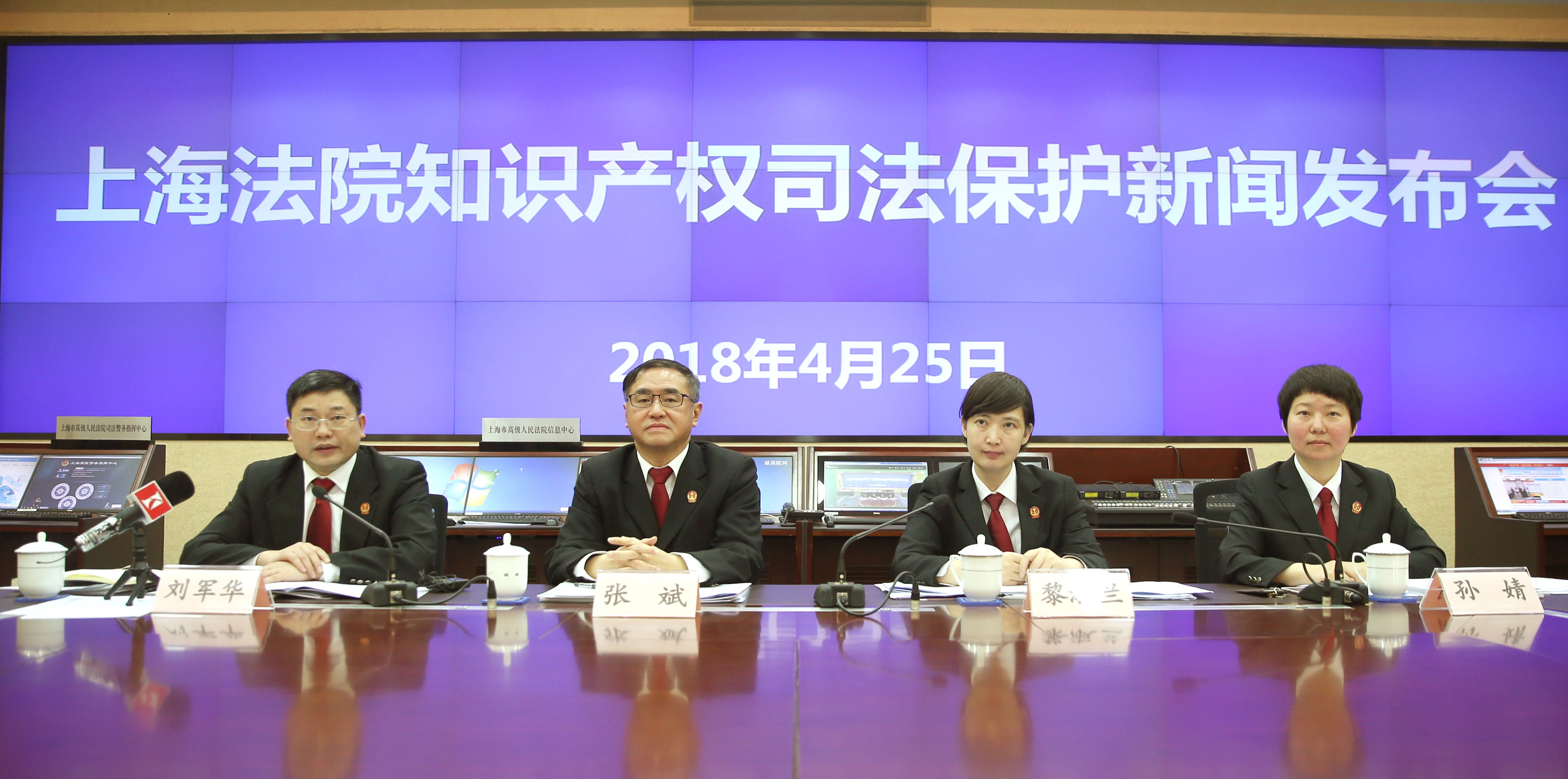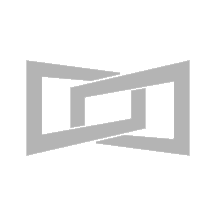上海知识产权法院发布2017年度知识产权司法保护状况白皮书
来源 | 上海知识产权法院

2017年,上海知识产权法院在上海市委的领导下,在市人大及其常委会的监督下,在上级法院的指导下,全面贯彻党的十八大和十八届历次全会精神,深入学习贯彻党的十九大精神,积极推进审判工作机制创新,充分发挥司法保护知识产权主导作用,为贯彻实施国家知识产权战略和创新驱动发展战略、推动上海经济社会发展提供有力的司法保障。
一、充分发挥审判职能,营造良好法治化营商环境
1.公正高效审理案件。2017年我院共受理各类知识产权案件2030件,同比增长8.15%。(见图1)其中,民事一审案件763件,民事二审案件1198件,行政一审案件5件,行政二审案件2件,诉前保全案件30件,申请再审审查案件3件,其他案件29件。审结各类案件2031件,同比上升8.2%,全年同期结案率达到100.05%。

图1 案件数量对比图
在受理的全部案件中,著作权案件1186件(含计算机软件著作权案件275件),专利权案件444件,商标权案件172件,不正当竞争案件70件,特许经营合同案件82件,技术合同案件17件,垄断案件3件,其他案件56件。(见图2)

图2案由分布图
在受理的一审案件中,技术类案件占比96.06%。其中,侵害专利权案件351件,专利权权属案件49件,专利合同案件44件,计算机软件开发合同案件202件,计算机软件权属、侵权案件73件,技术秘密案件13件,集成电路布图设计案件1件。(见图3)

图3技术类案件分布图
一年来,上海知识产权法院受理和审结的有较大影响和新类型知识产权案件有:一是大标的额案件。红五新加坡私人有限公司诉联系有限公司、齐飞国际发展有限公司等著作权许可使用合同纠纷案诉讼标的额达10亿元。二是社会影响较大案件。胡某与摩拜(北京)信息技术有限公司侵害发明专利权纠纷案;高域(北京)智能科技研究院有限公司与深圳市大疆创新科技有限公司等侵害发明专利权纠纷系列案;德国雨果博斯商标管理有限公司等与深圳雅蓝波士服饰有限公司等侵害商标权纠纷案;芬迪爱得乐有限公司与上海益朗国际贸易有限公司侵害商标权及不正当竞争纠纷上诉案;上海三联(集团)有限公司等与南京吴良材眼镜有限公司等侵害商标权纠纷上诉案;拉菲罗斯柴尔德酒庄与上海保醇实业发展有限公司等侵害商标权纠纷案。三是新类型案件。上海汉涛信息咨询有限公司与北京百度网讯科技有限公司不正当竞争纠纷上诉案;广州硕星信息科技有限公司等与上海壮游信息科技有限公司等著作权侵权及不正当竞争纠纷上诉案;浙江淘宝网络有限公司与上海载和网络科技有限公司等不正当竞争纠纷上诉案。
2.服务国家战略实施。出台《为“十三五”时期上海国际贸易中心建设提供司法服务和保障的意见》,依法平等保护中外当事人的知识产权,努力为营造法治化、国际化、便利化的营商环境提供优质司法服务和保障。充分发挥涉自贸区知识产权案件专项合议庭的作用,共受理相关案件286件,审结259件。围绕服务国家创新驱动发展战略和上海科创中心建设大局,经深入调研、积极建言,最高人民法院在我院设立“最高人民法院知识产权司法保障科技创新研究(上海)基地”,提升服务科技创新的精准性、有效性。深化与张江高新区管委会的合作,围绕服务创新创业组织开展联组学习交流,拓展“全国审判业务专家陈惠珍法官工作室”服务覆盖区域。强化与中国(浦东)知识产权保护中心、浦东新区知识产权局合作,设立“全国审判业务专家丁文联法官工作室”,及时了解并回应涉生物医药、高端装备制造等领域的知识产权司法保护需求。
3.强化法律适用统一。充分发挥知识产权专门法院在统一裁判标准、确立裁判规则等方面的职能作用。出台《侵害商业秘密纠纷审理指引》等类案裁判规则,举办“首届知识产权司法保障科技创新研讨会”“特许经营法律问题研究”“新修订《反不正当竞争法》专题学习会”等研讨学习活动,统一相关案件的审理程序和审理思路。积极推进计算机软件开发合同案件等类案审判智能辅助系统开发工作。强化对下级法院的监督指导,多次召开辖区法院适法统一座谈会,有效统一上下级法院之间的裁判思路、观点和法律适用。通过审理社会影响大、关注度高的重大、疑难案件,确立了一系列裁判标准,为行业发展提供行为示范和有效指引。在芬迪爱得乐有限公司提起上诉的侵害商标权及不正当竞争纠纷案中,我院经审理明确了正品销售商正当使用他人商标的合理范围和边界,为相关经营者规范开展经营活动提供了指引。在上海全土豆文化传播有限公司提起上诉的侵害作品信息网络传播权纠纷案中,我院经审理明确了认定网络服务提供商对平台上所传播侵权作品是否存在主观过错应当考虑的因素,为准确认定网络服务提供商的民事责任提供了裁判指引。
二、着力破解赔偿难题,充分实现知识产权市场价值
1.努力解决侵权成本低、维权成本高的问题。建立以尊重知识产权、鼓励创新运用为导向,以实现知识产权市场价值为指引,符合权利人市场预期的侵权损害赔偿司法认定机制,积极探索知识产权知名度等市场价值因素在侵权损害赔偿确定中的作用。在广州硕星信息科技有限公司提起上诉的侵害著作权及不正当竞争纠纷案中,我院根据涉案游戏的知名度等因素认定侵权人承担经济损失赔偿400万元。依法将权利人维权的合理开支计入损害赔偿范围,由侵权败诉方承担权利人的维权成本。在宁波市福达刀片有限公司提起上诉的侵害商标权纠纷案中,我院经审理依法改判支持了权利人关于合理费用的诉讼请求,切实降低维权成本。
2.积极在法定赔偿限额以上依法酌情确定赔偿数额。对于难以证明侵权受损或侵权获利的具体数额,但有证据证明前述数额明显超过法定赔偿最高限额的,综合全案的证据情况,在法定赔偿最高限额以上合理确定赔偿额。在SAP股份公司起诉的侵害计算机软件著作权纠纷案中,我院经审理认为,虽然原告的实际损失和两被告的违法所得均难以确定,但现有证据已经可以证明原告因侵权所受到的损失超过法定赔偿数额的上限,故综合全案的证据情况,根据两被告的培训费价格、侵权行为的性质、主观状态、侵权情节及持续时间,参考原告向合作伙伴收取特许权使用费的比例等,在法定赔偿最高限额之上依法酌情合理确定赔偿数额为155万元。
3.加大对恶意侵权、重复侵权的惩治力度。对于具有重复侵权、恶意侵权以及其他严重侵权情节的,依法加大赔偿力度,提高赔偿数额,让侵权者付出沉重代价,有效遏制和威慑侵犯知识产权行为。在拉菲罗斯柴尔德酒庄提起的侵害商标权纠纷案中,我院经审理认为,被告主观恶意明显,为有效遏制侵权行为,判决被告赔偿包括合理费用在内的经济损失200万元。在株式会社卡那兹提起上诉的侵害商标权及不正当竞争纠纷案中,我院经审理认为,在已有在先判决认定相关侵权行为的情况下,侵权行为人再次实施类似行为侵害权利人与前案相同权利,构成重复侵权,应加重侵权行为人的赔偿责任,故将赔偿数额由一审判决的3万元改判为12万元。在上海鑫百勤专用车辆有限公司起诉的侵害专利权纠纷案中,被告在另案判决认定其享有的专利权归原告所有的情况下,故意向国家知识产权局提交放弃专利权的申请,致使原告本应获得的专利权灭失,我院经审理认为,被告的行为属于恶意放弃专利权,应当赔偿原告的相应损失。
三、着力破解举证难题,减轻权利人举证负担
1.充分发挥诉讼保全措施的制度效能。建立程序规范、保护有力的诉讼保全机制。鉴于知识产权诉讼保全具有专业性强、技术要求高的特点,探索完善“法官+执行人员+技术专家+技术调查官”的诉讼保全执行模式。全年共裁定支持各类诉讼保全198件,其中,诉前保全30 件、诉中保全168件,为案件的有效审理和纠纷化解打下了坚实基础。在申请人某管理软件有限公司申请的诉前证据保全案中,我院法官、执行人员、技术调查官以及聘请的技术专家通力配合,及时对被申请人使用的上百台计算机中的侵权软件进行了保全固定,在此基础上双方顺利达成赔偿加许可的和解协议,有效保护了权利人的合法权益。在赫盛广电(上海)有限公司起诉的侵害计算机软件著作权纠纷案中,我院根据当事人申请,充分发挥网络执行查控系统功能,对财产保全申请进行了850万元的足额保全,在此基础上当事人达成和解,原告撤回起诉,纠纷顺利解决。
2.充分发挥调查令等措施在调查取证中的作用。针对知识产权案件中侵权人对侵权获利举证难,以及有的证据由第三方掌握不易获取等问题,我院充分发挥调查令、依职权调查取证等机制的作用,适当减轻权利人的举证负担。在涉职务发明创造发明人、设计人奖励、报酬、专利许可使用合同等纠纷中,针对发明人很难获取所在单位、被许可人实施专利的销售合同、发票等难题,合理分配举证责任,引导发明人所在单位主动提交相关专利的销售发票,为准确查明职务发明人应获得的报酬数额打下基础。对销售数据等由第三方掌握的情况,通过签发法院调查令、委托调查函等方式,适当加大取证力度。在荷兰飞利浦公司起诉的侵害外观设计专利权纠纷案中,经专利权人申请,我院依法向其出具调查令,由其向淘宝网获取被告销售记录并进行举证,查明被控侵权产品销售规模、利润率等相关事实,确定了被告的侵权获利大于原告的诉请主张,最终全额支持了权利人的赔偿请求。在兄弟工业株式会社起诉的侵害发明专利权纠纷案中,我院依职权向浙江省宁波市鄞州区国家税务局调取了被告相关的销售发票,并以此为基础判令被告承担100万元的赔偿责任。
3.推进知识产权诉讼诚信建设。在案件审理中探索诚信诉讼告知制度,适度强化诉讼当事人的真实义务与协助义务,引导当事人在诉讼中说真话、讲真事,对不诚信诉讼行为,依法给予制裁。在多起申请人提起的明显不具有合理理由的管辖权异议案件中,经我院释明,申请人主动撤回管辖权异议,避免案件审理因管辖权异议而产生的不合理拖延。在深圳市景田食品饮料有限公司起诉的侵害外观设计专利权纠纷案中,被告在审理中明确表示涉案域名不为被告所有,原告通过公证保全证明该域名确为被告所有并支付了相关的公证费用。对此,我院认为在法院已明确告知各方当事人对于案件事实应如实陈述的情况下,被告在诉讼中未能遵循诚实信用原则,故判令被告承担原告额外支出的公证保全费用。探索适用证据妨碍排除规则,让拒不提交证据的当事人承担相应的不利后果。在南京光威能源科技有限公司起诉的侵害发明专利权纠纷案中,被告经释明未能向我院提供财务账簿以查明侵权范围和侵权获利,根据原告的诉讼主张和提交的证据,我院全额支持了原告的赔偿请求。
四、着力破解周期长难题,增强司法保护的便民性和时效性
1.深化“四位一体”技术事实查明机制。不断完善技术调查、技术咨询、专家陪审、技术鉴定相互协调的“四位一体”技术事实调查认定体系综合运用规则。规范技术调查官参与案件审理机制,制定出台《技术调查官出庭规则》,平稳实现常驻技术调查官交流轮换。不断扩展“四位一体”技术事实调查认定体系在具体案件中运用的广度和深度,技术调查官、技术咨询专家以及专家陪审员参与庭前现场勘验、软件演示、庭审中的技术事实调查以及诉前调解中的技术事实解答等。技术调查官全年共参与审理案件67件,出庭91次,出具技术审查意见书16份,参与保全、勘验、咨询等212次;专家陪审员参与案件审理158件,专家咨询42次,技术鉴定32次。充分发挥技术专家在查明技术事实中的作用,有效提升诉讼效率,全年案件平均审理天数113.07天,同比减少16.19天。
2.深化多元化纠纷解决机制。充分发挥社会组织、行业协会在多元化解纠纷中的作用,调解员实行定期驻院调解,不断推进和深化知识产权诉前、诉中委托调解工作。2017年经双方当事人同意进入诉前调解的案件115件,同比上升18.56%,调解成功31件,调解成功率26.96%。制定《推进诉中委托调解的实施方案》,积极推进诉中委托调解,特别是开展二审案件委托调解工作,促进繁简分流。在宁波长青家居用品有限公司起诉的专利代理合同纠纷31起案件中,应双方当事人申请,我院委托上海市浦东新区知识产权协会人民调解委员会对案件进行诉中调解。调解过程中,调解人员将当事人双方达成的共识以及争议焦点向合议庭及时反馈。承办法官据此及时召集双方就案件法律适用、审判流程等进行详细法律释明。在此基础上,调解委员会向双方当事人提出调解方案建议,最终原被告达成一揽子调解协议,且两被告当庭履行调解协议,案件得到圆满解决,既节约了当事人诉讼成本,也及时化解了纠纷。
3.加强信息化手段深度运用。以数据法院、智慧法院建设为目标,主动拥抱大数据、人工智能等现代科技,以电子卷宗随案同步生成及深度运用为主线,提升信息化建设和应用水平。开发完善19项应用软件和23项硬件项目。案卷材料扫描程序进一步优化,电子卷宗应用逐步深入,音字转换探索应用,一审案件裁判文书辅助生成系统建成,审判管理、庭审活动、诉讼服务智能化水平不断提升。为缩短诉讼周期、节约诉讼成本、提高案件审理效率,我院应当事人申请,尝试在多起案件中采用远程视频的方式开庭、调解、召开技术听证会、对技术鉴定意见进行质询等,实现“让数据多跑路,让当事人少跑腿”。
4.建立委托公证机构送达机制。送达难是困扰知识产权审判的一大难题,为提高知识产权案件的审理效率,我院与上海市东方公证处建立委托公证送达机制。对于无法通过邮政专递送达的案件,尽量避免直接适用周期较长的公告送达,而是委托公证机构派员直接送达,既提升了送达成功率,缩短审理周期,也能对送达过程进行公证固定。建立合作机制以来,共委托送达65件,成功送达33件。在上海欢歌文化传媒有限公司提起上诉的侵害著作权纠纷案中,被上诉人世盟公司经多次邮寄送达均被退回,为保障诉讼参与人的合法权利,我院委托上海市东方公证处成功进行了送达。
五、积极延伸司法职能,增强人民群众获得感
1.促进知识产权创造、保护和运用水平提高。针对案件审理过程中发现的相关企事业单位在知识产权创造、保护和运用中存在的问题,向上海市徐汇公证处、上海东方网股份有限公司等发送司法建议书7份,得到相关单位的积极反馈。前往国家技术转移东部中心、杨浦科技创业中心等14家企事业单位走访调研,了解企业发展中的知识产权保护需求。“全国审判业务专家陈惠珍法官工作室”先后走访张江高新区开展知识产权宣传活动、组织园区企业代表旁听庭审24次,从司法实践的角度就企业知识产权管理与保护开展专题讲座,来自张江高新区各园区管理机构、园区企业代表共计200余家、500余人参加培训。
2.注重司法裁判的规则意义。进一步强化精品意识,完善精品案件工作机制,打通精品案件审理、总结、宣传各环节工作,培育打造了一批精品案例、优秀文书和示范庭审。我院王秋良院长担任审判长审理的原告上海晨光文具股份有限公司诉被告得力集团有限公司等侵害外观设计专利权纠纷案等34个案件分别入选中国法院知识产权司法保护十大案件、全国法院和上海法院典型案例、精品案例、示范庭审、优秀文书等,并注重从案件中归纳出了具有普遍指导意义的司法裁判标准,充分发挥新型、疑难、复杂案件对于司法导向和行业发展的规则引领作用。
3.实现法治宣传常态化。持续开展知识产权保护宣传活动,打通全媒体宣传渠道,全方位宣传知识产权法院改革发展成效。认真做好裁判文书上网工作,实现依法应当上网的裁判文书100%上网。发布年度知识产权司法保护状况、2015-2016年专利案件审判情况和计算机软件著作权审判情况以及典型案例。创新本院官方微信栏目,创设“漫知视界”等新型栏目,提升可读性、影响力,上海知识产权法院微信公众号被评为2016年度上海法院最具活力微信公众号。全年开展互联网庭审直播63案;组织开展“公众开放日”活动15次,近300人来院参观、旁听、交流,参加人员来自社会各个方面,有机关工作人员、企业代表、律师、学校师生、社区居民等。充分发挥中国法院知识产权司法保护国际交流(上海)基地作用,共有100多人次的国际组织、外国和港澳台地区专业人士来院交流工作。组织参加各种国际性论坛和研讨活动20多次,充分展示中国法院和法官的良好形象。
2017年,我院知识产权审判第一庭荣立集体二等功,9名法官、法官助理分别荣立全国法院国际交流合作工作先进个人、上海市三八红旗手、个人一等功、二等功、上海法院审判业务骨干等称号。完成《计算机软件开发合同纠纷案件现状、问题及对策》《商标在先使用的法律性质及司法适用》等课题成果,公开发表文章60余篇,多篇案例、论文等分别在全国法院系统2017年度优秀案例分析评比、全国法院网络宣传成果评选、上海法院系统学术讨论会中获奖。
2018年是贯彻党的十九大精神的开局之年,是改革开放40周年,是决胜全面建成小康社会、实施“十三五”规划承上启下的关键一年。上海知识产权法院将以习近平新时代中国特色社会主义思想为指导,坚持公正司法、司法为民,继续当好司法改革排头兵、创新发展先行者,为建设知识产权强国和世界科技强国、加快推进上海“五个中心”建设发挥好司法的服务保障功能。
Shanghai Intellectual Property Court’sJudicial Protection over Intellectual Property Rights 2017
In 2017, under the leadership of CPC Shanghai Municipal Committee, the supervision of Shanghai Municipal People’s Congress and its standing committee and the guidance of higher courts, Shanghai Intellectual Property Court fully implemented the guidelines from the Party's 18th National Congress and its plenary sessions, further studied and implemented the Party's 19th National Congress, actively advanced innovation of trial working mechanisms, and gave full play to the leading role of judicial protection over intellectual property right, providing powerful judicial guarantee for implementing the state’s intellectual property strategy and innovation-driven development strategy and boosting Shanghai’s economic and social development.
I. Giving Full Play to Judicial Functions to Create a Sound Law-based Business Environment
1. Trying Cases in a Fair and Efficient Manner. In 2017, the court accepted and heard a total of 2030 intellectual property cases, an increase of 8.15% year on year, (See Figure 1) including 763 first-instance civil cases, 1198 second-instance civil cases, 5 first-instance administrative cases, 2 second-instance administrative cases, 30 pre-trial preservation cases, 3 cases of review of retrial application, and other 29 cases. 2031 cases were concluded, an increase of 8.2% over the previous year

Figure 1 Comparison of Case Numbers
Among all the cases accepted, 1186 cases were related to copyright (including 275 cases concerning computer software copyright), 444 to patent right, 172 to trademark right, 70 to unfair competition, 82 to franchise contracts, 17 to technical contracts, 3 to monopoly and 56 other cases. (See Figure 2)

Figure 2 Distribution of Case Causes
Among all the first-instance cases accepted, technology-related cases accounted for 96.06%, including 351 cases related to patent right infringement, 49 to patent ownership, 44 to patent contracts, 202 to computer software development contracts, 73 to compute software ownership and infringement, 13 to technical secrets, and 1 to integrated circuit layout design. (See Figure 3)

Figure 3 Distribution of Technology-related Cases
Over the last year, Shanghai Intellectual Property Court accepted and closed a number of intellectual property cases with great influence and new-type intellectual property cases. I. Cases Involving Large Amount of Money: the case of dispute over copyright license contract among Hongwu Singapore Private Limited Company Contact Co., Ltd. and Qifei International Development Co., Ltd., etc. involved an amount of RMB 1 billion. II. Cases with Great Social Impact: case of dispute over patent for invention— Hu v. Mobike Beijing Mobike Technology Co., Ltd.; case of dispute over infringement upon patent for invention— Baoyu (Beijing) Intelligent Technology Academy Co., Ltd. v. Shenzhen Dji-innovations Co., Ltd.; case of dispute over trademark infringement— Hugo Boss Trade Mark Management Gmbh & Co.Kg v. Shenzhen Yarnboss Garment Co., Ltd.; appeal in the dispute over trademark infringement and unfair competition— Fendi Adele S.R.L v. Shanghai Yilang International Trade Co., Ltd.; appeal in the dispute over trademark infringement— Shanghai Sanlian (Group) Co., Ltd. v. Nanjing Wuliangcai Glasses Co., Ltd.; case of dispute over trademark infringement— Lafite Rothschild and Shanghai Mellowines Development Co., Ltd. III. New-type Cases: appeal in dispute over unfair competition— Shanghai Hantao Information Consulting Co., Ltd. v. Beijing Baidu Netcom Science and Technology Co., Ltd.; appeal in dispute over copyright infringement and unfair competition— Guangzhou Hugenstar Information Technology Co., Ltd. v. Shanghai Zhuang You Information Technology Co., Ltd.; appeal in dispute over unfair competition — Zhejiang Taobao Network Co., Ltd. v. Shanghai Zaihe Network Technology Co., Ltd.
2. Serving the Implementation of National Strategies. The Court released the Opinions on Providing Judicial Service and Guarantee for Building Shanghai Into an International Trade Center during the 13th Five-year Plan to protect the intellectual property right of Chinese and foreign parties equally and try to provide quality judicial service and guarantee for creating a law-based, international and convenient business environment. By making full use of the special collegial panel for intellectual property cases in the free trade zone, the Court accepted a total of 286 related cases, among which 259 were concluded. Focusing on serving the state’s innovation-drive development strategy and the initiative to build Shanghai into a technology innovation center, the Court made in-depth investigations and actively offered suggestions. The Supreme People’s Court established the Technological Innovation Research Base of the Supreme People’s Court (Shanghai) for Intellectual Property Judicial Protection in the Court in order to improve the accuracy and effectiveness of technological innovation service. The Court deepened cooperation with the management committee of Zhangjiang High-tech Park, had communications focusing on serving innovation and entrepreneurship, and expanded the service area of “National Trial Expert Chen Huizhen’s Studio.” The Court strengthened cooperation with China (Pudong) Intellectual Property Protection Center and Pudong Intellectual Property Station, founded “National Trial Expert Ding Wenlian’s Studio” and know about the latest demands for judicial protection over intellectual property in such fields as biomedicine and high-end equipment manufacturing.
3. Intensifying the Uniform Application of Law. The Court gave full play to the functional role of the special intellectual property court in unifying trial standard and establishing adjudication rules. It released the Guide on the Trial of Trade Secrets Infringement Cases to set the adjudication rules for similar cases, held seminars and study activities including “First Seminar on IPR Judicial Guarantee for Technological Innovation”, “Study on Legal Issues Concerning Franchise” and “Symposium on the New Anti-Unfair Competition Law”, and unified the trial procedures and thoughts of relevant cases. The development of intelligent assist systems for the trial of cases including those concerning computer software development contract was promoted. Supervision and guidance over lower courts was strengthened. Forums on law application of districts under the Court’s jurisdiction were held, effectively unifying the trial thoughts, opinions and law application of lower and upper courts. A series of trial standards were established by trying cases with significant social impact, cases that draw great attention and complex cases, playing a demonstrative and guiding role on industrial development. In the case of dispute over trademark infringement and unfair competition appealed by Fendi Adele S.R.L, the Court clarified the reasonable scope and boundary of authentic product sellers’ fair use of others’ trademark, guiding the operation of relevant operators. In the case of dispute over the right of communication through information networks appealed by Shanghai Quantudou Culture Communication Co., Ltd., the court through trial defined the factors that should be considered for determining whether a network service provider has subjective fault for the infringing work communicated on the platform, guiding the accurate determination of network service providers’ civil liabilities.
II. Focusing on Solving the Difficulties in Compensation to Fully Realize the Market Value of Intellectual Property Rights
1. Making Efforts to Address the Problem of Low Infringement Cost and High Right Protection Cost. The Court established an infringement compensation judicial determination mechanism oriented by the respect of intellectual property rights and encouragement of innovative application and guided by the market value of intellectual property that meets the market expectation of obligees, and actively explored the role of market value factors such as intellectual property popularity in the determination of damage compensation. In the case of dispute over copyright and unfair competition appealed by Guangzhou Hugenstar Information Technology Co., Ltd., the Court determined that the infringer should compensate RMB 4 million for the obligee’s economic loss based on the popularity of the game involved and other factors. The Court also determined that the obligee’s reasonable expenses for right protection should be included in the compensation and losing party should bear the obligee’s cost for right protection. In the case of dispute over trademark infringement appealed by Ningbo Fuda Blades Co., Ltd., the Court through trial amended the original judgment and was in favor of the obligee’s claim for reasonable expenses, lowering the cost for right protection.
2. Determining the Amount of Compensation at Judicial Discretion Based on Statutory Limit of Compensation. When it’s hard to prove the exact amount of loss or gain due to the infringement but it’s able to prove the aforementioned amount obviously exceeds the ceiling of statutory compensation, the Court determined the amount of compensation above the ceiling of statutory compensation based on all the evidence of the case. In the action of dispute over computer software copyright brought by SAP, the Court held through trial that although it’s hard to determine the actual loss of the plaintiff and illegal gains of the two defendants, the existing evidence already can prove the loss of the plaintiff incurred from the infringement exceeded the ceiling of statutory compensation. Therefore, given all the evidence of the case, the price of training fee, infringement nature, subjective state, infringement circumstances and duration of the two defendants, the Court determined at its discretion that the compensation amount should be RMB 1.55 million by referring to the plaintiff’s charge of royalties from its partners.
3. Imposing Severer Punishment upon Willful and Repeated Infringement. For repeated infringement, willful infringement and infringement with other serious circumstances, the Court gave severer punishment and increased the amount of compensation to make infringers pay heavy prices and effectively deter intellectual property infringement. In the suit of dispute over trademark infringement filed by Lafite Rothschild, the Court held through trial that the defendant had obvious subjective malice, thus ordered the defendant to compensate RMB 2 million for economic loss including reasonable expenses in order to effectively deter infringement. In the action of dispute over trademark infringement brought by Kanatsu Co., Ltd, through trial, the Court held the infringer, who implemented similar practice to infringe the obligee’s right which is the same as that in the previous case when there was a prior ruling that had adjudged relevant infringement, committed repeated infringement and should be imposed with greater compensation liability, thus ruling the amount of compensation shall increase from the RMB 30,000 in the first instance to RMB 120,000. In the action of dispute over patent brought by Shanghai Xin Bai Qin Vehicle Co., Ltd., the defendant deliberately applied for giving up patent to State Intellectual Property Office when a ruling given in another case determined that the patent belonged to the plaintiff, rendering the loss of the plaintiff’s patent. The Court held through trial that the defendant’s behavior was a malicious waiver of patent and it should compensate for the plaintiff’s corresponding loss.
III. Putting Forth Efforts to Solve Difficulties in Producing Evidence to Relieve Obligee’s Burden of Proof
1. Giving Full Play to the Efficacy of Preservation Measures. The Court established a preservation mechanism with standard procedures and powerful protection. As IP litigation preservation requires expertise and technology, the Court explored and improved the “judge + enforcement, officer + technical, experts + technical investigator” litigation preservation enforcement mode. In 2017, the Court granted judgment in favor of 198 applications for litigation preservation, including 30 pre-trial preservations and 168 on-trial preservations, laying a solid foundation for effective trial of cases and dispute resolution. In the case of pre-trial preservation applied by a management software Co., Ltd., the Court’s judges, enforcement officers, technical investigators and the employed technical experts made full cooperation and preserved the infringing software in hundred computers used by the respondent in a timely manner. Based on this, the parties reached a reconciliation agreement on compensation and license, effectively protecting the legitimate rights and interests of the obligee. In the action of dispute over computer software copyright brought by Mexxen Technology (Shanghai) Inc., the Court made full use of the function of online check and control upon application of one party, and preserved the RMB 8.5 million in full upon receiving property preservation application. As a result, the parties reached an accommodation, the plaintiff withdrew the lawsuit, and the dispute was resolved successfully.
2. Bringing into Full Play the Role of Measures such as Investigation Order in Investigation and Evidence Collection. Given that it’s difficult for infringers to produce evidence for gains from infringement and it’s not easy to acquire some evidence from the third party in intellectual property cases, the Court gave full play to the role of such mechanisms as investigation order and ex officio investigation and evidence collection, reducing the obligee’s burden of proof within a reasonable extent. In disputes involving employee inventors, design reward, remuneration, patent licensing contract, etc., as it’s hard for the inventor to obtain the sales contact and invoice, etc. from his employer and the licensee, the Court reasonably allocated the burden of proof and guided inventors’ employers to proactively submit the sales invoice of relevant patent, laying a good foundation for finding out the accurate amount of remuneration of the employee inventor. For sales data and other information mastered by the third party, the Court facilitated evidence collection by issuing court investigation order and letter of entrusted investigation, etc. In the action of dispute over design patent brought by the Dutch company Philips, upon application of the patentee, the Court issued an investigation order for the plaintiff to obtain the defendant’s sales record from Taobao.com and produce evidence. The Court ascertained such facts such sales size of the alleged-infringing products and profit margin, and confirmed the claim that defendant’s gains from infringements were more than the plaintiff’s, and accordingly granted judgment in favor of the obligee’s compensation claim in full amount. In the action of dispute over patent for invention brought by Brother Industries, the Court acquired the relevant sales invoices of the defendant from Yinzhou District Office, SAT by right of office, and ultimately ordered the defendant compensate RMB 1 million.
3. Promoting Good Faith in Intellectual Property Proceedings. The Court explored a system of good faith litigation notice in trials to reinforce the litigation parties’ duty of being honest and providing assistance and guide them to tell the truth, tell true stories in proceedings and give punishment on dishonest litigation behaviors. In several actions of dispute over jurisdiction brought by applicants that are obviously without reasonable grounds, after the explanation of the Court, the applicants withdrew on their own initiative the objection to jurisdiction and thus avoided unreasonable delay of trial due to objection to jurisdiction. In the action of dispute over design patent brought by Beijing Ganten Food & Beverage Co., Ltd., the defendant clearly expressed during the trial that the domain name involved didn’t belong to the defendant, while the plaintiff proved through preservation notarization that the domain name belonged to the defendant who paid for the notarization. Therefore, the Court held that the defendant violated the principle of good faith in litigation in the circumstance that the court had clearly notified the parties should tell the truth about the case, thus ruling the defendant should bear the plaintiff’s expenses for preservation notarization. The Court explored the application of evidence impairment removal rules to make the party refusing to submit evidence bear the adverse consequences. In the action of dispute over patent for invention brought by Nanjing Ecoway Energy Technology Co., Ltd., the defendant failed to provide accounting records for ascertaining infringement scope and gains from infringement after the Court’s explanation, the Court was in favor of the plaintiff’s claim for compensation in full amount according to the plaintiff’s claims and evidence produced by it.
IV. Solving the Problem of Long Cycle to Make Judicial Protection More Convenient and Effective
1. Deepening the “Four in One” Technical Facts Ascertaining Mechanism. The Court kept improving the comprehensive rules for applying the “four in one” (four: technical investigation, technical consulting, expert jury and technical evaluation) technical facts ascertaining mechanism, standardized the mechanism for technical investigators to participate in trials and released the Rules for Technical Investigators Appearing before Court to stabilize the turnover of resident technical investigators. The Court also kept expanding the application coverage and depth of the “four in one” technical facts ascertaining mechanism in specific cases. Technical investigators, technical consultants and expert jurors took part in pre-trial on-site inspection, software demonstration, on-trial technical fact investigation and answering to technical facts in pre-trial mediations. In 2017, technical investigators participated in the trial of 67 cases, appeared in the court for 91 times, issued 16 technical review opinions, took part in preservation, inspection and consulting totaling 212 times; expert jurors participated in 158 trials, expert consulting for 42 times and technical evaluation for 32 times. The Court gave full play to the role of technical experts in ascertaining facts and greatly improved litigation efficiency. The number of days of trial averaged 113.07 days, 16.19 days less over the previous year.
2. Deepening Diversified Dispute Resolution Mechanisms. The Court gave full play to the role of social organizations and industrial associations in diversified dispute resolution and engaged resident mediators for mediation on a regular basis, in order to advance and deepen pre-trial and on-trial mediation work in intellectual property cases. In 2017, the parties agreed to pre-trial mediation in 115 cases, up by 18.56% over the previous year. Among them mediation worked out in 31 cases, accounting for 26.96%. The Court formulated the Plans for Advancing the Implementation of On-trial Entrusted Mediation, actively promoted on-trial entrusted mediation, especially entrusted mediation in second instances, and facilitated the separation of complex cases from simple ones. In the 31 actions of dispute over patent agency contract brought by Evergreen Enterprises Inc., upon application of the parties, the Court entrusted the People’s Mediation Committee of Shanghai Pudong Intellectual Property Association to conduct on-trial mediation for the case. During the mediation, the mediators fed back on the consensus reached between the parties and the focus of dispute to the collegial penal in time. Based on the feedback, the judge handling the case gave a detailed explanation to law application, trial process, etc. of the case to the parties. Then the mediation committee put forward suggestions on mediation plans to the parties. Eventually, the plaintiff and the defendant reached a package mediation agreement and performed the agreement in court. The case was solved successfully. The litigation cost of the parties was saved, and the dispute was resolved in a timely manner.
3. Strengthening In-depth Application of Information Technologies. Aiming to build a data court and an intelligent court, the Court embraces big data, artificial intelligence and other modern technologies with synchronous generation and in-depth application of electronic files as the main line to improve informatization development and application level. The Court developed and improved 19 application software and 23 hardware programs. File scanning procedures were optimized, electronic files were applied more extensively, pinyin-to-character conversion was explored, first-instance judgment document generation aided system was established, and the intelligence level of trial management, court hearing and litigation service kept increasing. To reduce litigation period, save litigation cost and improve trial efficiency, the Court upon the application of the parties opened court, conducted mediation, convened technical hearing, and addressed inquiries on technical expertise in the form of remote video in several cases, realizing “let data run more and people run less.”
4. Establishing the Mechanism of Service by Entrusted Notaries. Difficult service of documents has been a problem puzzling intellectual property trials. In order to improve the efficiency of intellectual property case trials, the Court established a mechanism to entrust Shanghai Oriental Notary Public with service. For cases that can’t be served via postal delivery, the Court entrusted a notary office with personal service to avoid the use of service by publication that takes a long time, increasing the rate of successful service, reducing trial period and notarizing the service process. Since the cooperation mechanism was established, the Court has entrusted 65 services, among which 33 worked out. In the appeal over copyright infringement brought by Shanghai Huange Culture Media Co., Ltd., the postal service to respondent Shanghai Shimeng Property Co., Ltd. was returned for several times. To ensure the legitimate rights of the litigation participants, the Court entrusted a notary office with the service. Ultimately, Shanghai Oriental Notary Public served successfully.
V. Actively Extending Judicial Functions to Enhance People’s Sense of Gain
1. Promoting the Invention, Protection and Application of Intellectual Property. To solve the problems found in intellectual property invention, protection and application of enterprises and public institutions during trials, the Court sent 7 pieces of judicial advice to Shanghai Xuhui Notary Office, Eastday.com, etc. and received positive feedback from them. The Court visited 14 enterprises and public institutions including National Eastern Tech-transfer Center and Yangpu Venture to learn their demands for intellectual property protection in their development. “National Trial Expert Chen Huizhen’s Studio” carried out IPR publicity in Zhangjiang Hi-tech Park and organized representative of enterprises in the park to audit trials for 24 times. It also gave a thematic lecture on enterprises’ intellectual property management and protection in the perspective of judicial practice, which attracted over 500 participants from more than 200 management organizations and enterprise representatives of Zhangjiang Hi-tech Park.
2. Laying Emphasis on the Rule Significance of Judicial Adjudication. The Court enhanced model awareness, improved the work mechanism of model cases, and got through links of case trial, conclusion and publicity of model cases, successfully creating a batch of model cases, excellent instruments and model trials. 34 cases including the case of dispute over design patent between plaintiff M&G Chenguang Stationery Co., Ltd. and defendant Deli Group tried by presiding judge President Wang Qiuliang were listed into Chinese Courts IPR Judicial Protection Cases Top Ten, national and Shanghai court typical cases, model cases, demonstration trials, excellent instruments, etc., and concluded judicial standards with universal guiding significance from the cases and gave full play to the guiding role of new, complex and complicated cases in judicial direction and industrial development.
3. Regularizing Legal Publicity. The Court continuously carried out intellectual property protection publicity, conducted publicity on all media, and publicized the results of the Court’s reform and development in an all-round way. The Court did well in uploading judgment documents, and all judgment documents that should be uploaded online as required by law were uploaded. The Court released the yearly judicial protection over intellectual property, patent case trials in 2015-2016, the trials of computer software copyright and typical cases. The Court innovated its official WeChat column, and added new columns such as “Man Zhi Shi Jie” to increase readability and influence. The Court’s official WeChat account was rated as the most dynamic WeChat account of Shanghai court in 2016. The Court broadcast 63 cases live on the Internet and organized “public open day” for 15 times, attracting nearly 300 people from all walks of life including staff in state organs, enterprise representatives, lawyers, school staff and students and community residents to visit, audit and communicate. The Court gave full play to the role of Chinese Courts International Exchange Base (Shanghai) for Judicial Protection of Intellectual Property Rights. More than 100 people from international organizations and professionals from foreign countries, Hong Kong, Macao and Taiwan visited the Court for exchange. The Court organized more than 20 international forums and seminars, fully displaying the good image of Chinese courts and judges.
In 2017, the Court’s Intellectual Property Tribunal No. 1 received a collective second-class merit. Nine judges and judge assistants won titles including National Courts International Exchange and Cooperation Advanced Individual, Shanghai Women Pace-setter, Individual First-class Merit, Individual Second-class Merit, and Shanghai Courts Trial Core Member, etc. The Court completed subjects such as Status Quo, Problems and Countermeasures of Cases of Disputes over Computer Software Development Contract and The Legal Nature and Judicial Application of Trademark Prior Use and published more than 60 articles. Several cases and papers won prizes in the appraisal of excellent case studies in national court system of 2017, national courts on-line publicity effect appraisal and Shanghai court system seminars.
Year 2018 kicks off our efforts to put all the guiding principles from the Party’s 19th National Congress into action. It is the 40th anniversary of reform and opening-up, and it is a crucial year for securing a decisive victory in building a moderately prosperous society in all respects and for continuing to implement the 13th Five-Year Plan. Shanghai Intellectual Property Court will take President Xi Jinping’s thought on socialism with Chinese characteristics for a new era as guidance, adhere to fair justice and justice for people, continue to do well as a pacesetter for judicial reform and a forerunner for innovation-driven development, and bring into play the role of justice in serving and guaranteeing the development of a power country in intellectual property and science & technology and the acceleration of Shanghai’s development of “Five Centers”.



















